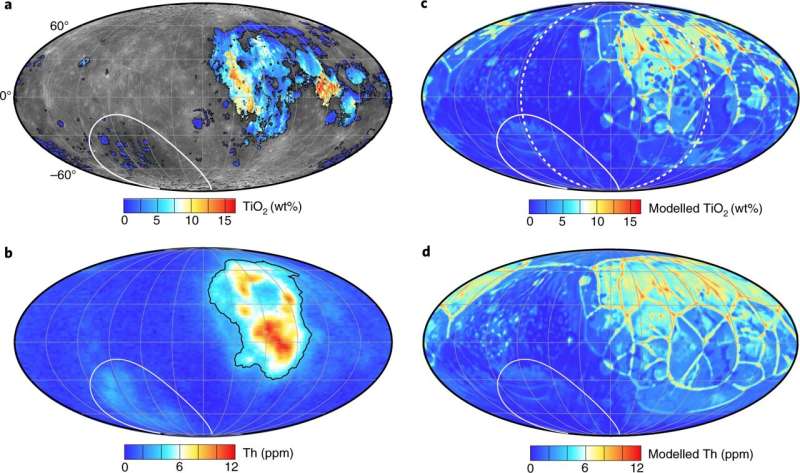January 12, 2022 report
Model suggests differences between near and far side of moon due to cosmic impact millions of years ago

A team of researchers affiliated with several institutions in China and one in Australia created a model to explain the differences found on the near and far sides of the moon. In their paper published in the journal Nature Geoscience, the model shows that a massive cosmic impact millions of years ago could account for what is seen on the moon's surface today.
For many years, scientists assumed that the moon looked pretty much the same from the near or far sides, but then probes found that was not the case at all. There were differences in how the surface looked and in the rocks and material situated on the surface. The findings set off speculation to explain the difference. However, most scientists had come to agree that during its early years, the moon was in a primordial state, which means that all of the material covering it would have blended into a nice, even mix that would have been sustained as the moon cooled and the surface hardened. That meant that the differences seen on different sides of the moon arose after the moon cooled. Some have suggested that the differences were due to a cosmic impact at the south pole. Observations have shown that a large impact occurred over 4 billion years ago, creating the Aitken Basin. But how such an impact could create the conditions found today was still a mystery.
In this new effort, the researchers took all of the known factors into consideration and put them into a model to simulate a large cosmic impact. Their simulation showed that such a large impact would result in a lot of heat, enough to restart the convection that occurred during the moon's early stages. But the simulation also showed that material from the body that collided with the moon would have made its way into the moon's interior, preventing even convection from occurring. It also showed the foreign material spreading out from the center of the collision area. Then it showed that as the convection continued, material from deep inside the moon made its way to the far-side surface of the moon, creating the differences observed today.
More information: Nan Zhang et al, Lunar compositional asymmetry explained by mantle overturn following the South Pole–Aitken impact, Nature Geoscience (2022). DOI: 10.1038/s41561-021-00872-4
Journal information: Nature Geoscience
© 2022 Science X Network





















